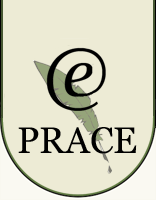
The overview of British colonial expansion
The British were not the first Europeans to visit the area known today as Ghana and trade with the coast. Forestalled by the Portuguese explorers, who advanced on that area in 1471 marking the beginning of the Gold Coast, they came two centuries later to conquer the land, build forts and settlements (Curtin 1995:280).
At first their powers and jurisdiction were confined to the leases of lands they had been given by the local chiefs. Gradually, however, the British extended the area of their authority taking over castles and forts of other European nations, the Dutch and the Danes, who were slowly losing their flourishing trade (ibid 1995:280).
Still, there was no legal connection between the Gold Coast and Britain, and it was not until 1874, when the British converted their settlements into a Crown Colony, followed by the Berlin Conference of 1884-1885 during which the British colonial rule over the Gold Coast was established, with the Executive Council consisting of British officers, and the Legislative Council as the chief governing bodies (Boahen 1998:11).
Encouraged by their success in gaining a strong hold on the coast, the British colonizers were anxious not only to maintain their position but also to expand it, which resulted in direct conflict with the Asante kingdom and consequently lead to a long series of wars between the British and their native allies and the Asantes. Eventually, the Asante was annexed to the British Crown on the 1st of January 1902 (Philips:1989:78).
The British did not experience similar difficulty in establishing themselves in the region north of Asante (Wilks 1975:120-126), where tempted by the prospect of extending their trade as widely as possible, they concluded treaties of friendship and protection with the native states, and in 1901 together with the Asante region, the Northern Territories became a Protectorate of Britain.
From 1897 progressive changes were made in the constitution of the colony (Gocking 2005:51-52), yet, the main body consisted of the Executive and Legislative Councils, both with official British majorities. After establishing in 1925 the Provincial Councils consisting of state chiefs given statutory recognition by the British Government, further changes were made in the constitution which resulted in increasing the number of unofficial African members in the Legislature making them almost as numerous as the official British members.
The establishment of the Provincial Councils pursued two ends. (Wraith 1973:198). Firstly, the institution itself was founded to bring the chiefs together in order to help them discuss freely their common problems and difficulties. Secondly, the Provincial Councils started a long, gradual process of estrangement between chiefs and their subjects since the majority of natives felt that the resolutions passed during the sessions of the councils were deeply influenced by the British.
The year of 1942 brought another constitutional advance with the decision of adding two African unofficial members to the Executive Council and an enormous increase in the African membership in the Legislature (ibid 1973:199).
Still, there was no constitutional resolution making the “Colony”, the Northern Territories and Asante one entity, and even though from 1934 the Executive Council of the Gold Coast Colony was also the Executive Council of Asante (Wilks 1975:126) and the Northern Territories, the governor put signature to their respective laws.
The year of 1946 began with the introduction of a new constitution, known as the “Burns Constitution” named after the Governor Sir Alan Burns in whose term of office it was introduced (McCarthy 1983:76).
The new constitution gave the colony a considerable measure of self-government (ibid 1983:81-83) which it had not experienced before. Moreover, it united the “Colony”, Asante and indirectly the Northern Territories under a single Legislature, and established an African unofficial majority, partly nominated and partly elected, which made the official British majority in the Legislature disappear. However, the Governor reserved his power of veto.
The new constitution was warmly welcomed by all sections of the population and the Press, and the British Government was lauded for its cooperation. A real understanding between the Government and the people was accomplished, and there were hopes for a bright future (Gocking 2005:84).
In the following year, 1947, however, it turned out that the document which made the Africans feel almost equal with their British occupants was no longer up to date, since it had been drafted to suit the conditions in 1943, people’s ambitions and opinions of that time, which changed dramatically. The state in which the country was found at that time demanded changes or a revolution would be inevitable; it demanded changes and somebody who would make them happen (Rotberg 1970:23).
A mass orator of great ability, Kwame Nkrumah, made extensive tours all over the “Colony”, popularizing his political party - Convention People’s Party (CPP) and its goal of immediate self-government. His charisma and people’s need for changes resulted in more and more supporters enlisting for CCP. Since the message of political freedom was being spread around the country Ghana was preparing for its independence. A birth of a new nation is dated on 6th of March 1957 (Amamoo 2000:6).
komentarze
Copyright © 2008-2010 EPrace oraz autorzy prac.